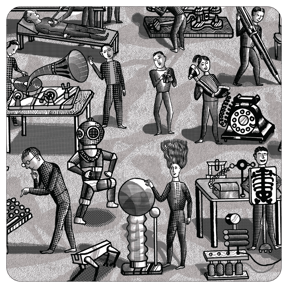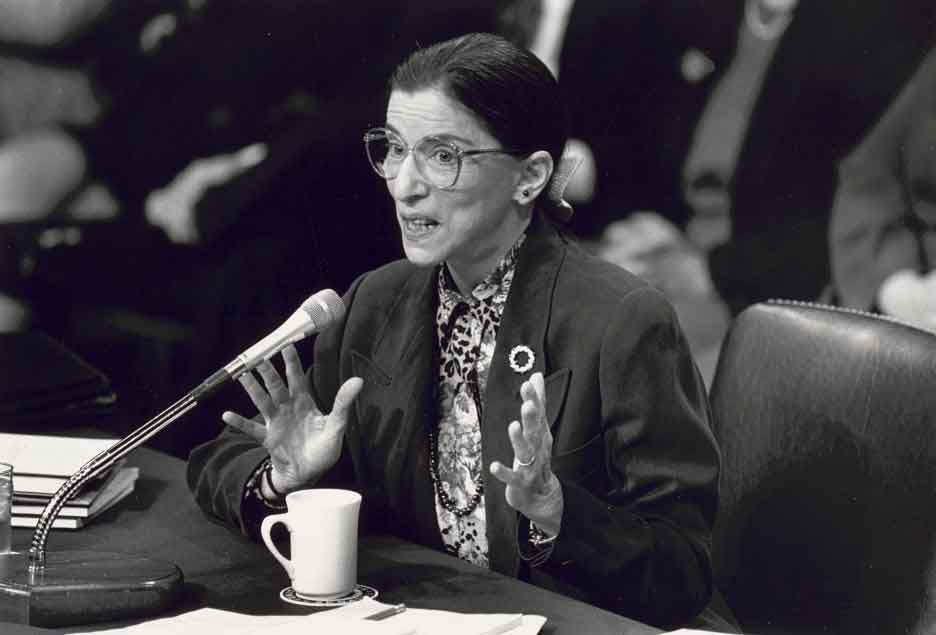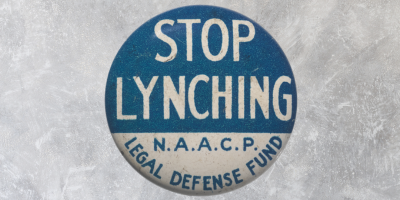The Day That Changed the World
Gibbs Smith Education is a mission-driven independent publisher. We believe in positively impacting the communities we serve, our employee-owners, local communities, and the book and education industries. Organized as a Benefit Corporation, we take care of our environment. We commit to carbon neutrality and reduce what we can and offset what we are not yet able to. We strive to create resources that empower students and teachers to work together to protect the planet. This article is from The Conservation Issue, vol 1.2.
In 1969, the United States was bitterly divided. Family members argued hotly about politics. Longtime friends stopped speaking over controversial issues like the Vietnam War, civil rights, and feminism.
Yet despite this tense and partisan atmosphere, a new environmental movement somehow captured the nation’s imagination and made history.
Ten Minutes That Mattered
That year, a Harvard student named Denis Hayes was invited to a 10-minute meeting with Wisconsin Senator Gaylord Nelson. That “10-minute meeting” ended up lasting for two hours, and in a short time it led to the very first Earth Day. Together, Gaylord Nelson and Denis Hayes were able to unite millions of diverse people into a single political force.
Many experts trace the start of the modern environmental movement to that first Earth Day. It was an event that historian Adam Rome called “the most famous little-known event in the world.”
Seeds of Change
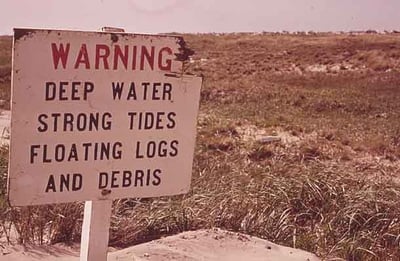
U.S. Supreme Court Justice Ruth Bader Ginsburg
Image: Collection of the Supreme Court of the United States.
Denis Hayes grew up in a Washington town near a paper mill. There, Hayes saw pollution that he called an “unconstrained disaster.” Fish in the Columbia River were dying in massive numbers because of toxic runoff from the mill. This sad evidence led Hayes to oppose the businesses that destroyed natural resources.
As for Senator Gaylord Nelson, he grew up loving the natural landscape. Nelson had seen how the timber industry had clearcut his Wisconsin’s white pine forests, leaving ruin behind. After Nelson entered politics, he was elected to the governor’s office. He then worked hard to protect Wisconsin’s natural resources, and he was known as the “Conservation Governor.”
After being elected to the Senate in 1963, Gaylord Nelson convinced President John F. Kennedy to take a “conservation tour” through 11 states to raise concern about the environment, especially pollution.
But the rest of the nation lagged far behind Nelson in recognizing this danger. When Senator Nelson tried to pass a law to ban the extremely toxic pesticide called DDT, not a single politician joined him.
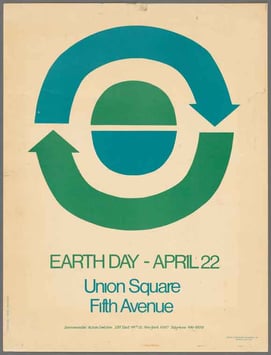
Poster from the first Earth Day
Image: Manuscripts and Archives Division, The New York Public Library.
Inspiration and Perspiration
College protests for civil rights and against the Vietnam War had grown popular in the 1960s. This made Senator Nelson believe that asking students to coordinate for an environmental message was possible. So the timing of Denis Hayes’s fateful 1969 meeting with Senator Nelson was perfect.
Denis Hayes knew Senator Nelson’s record, and he agreed with his environmental stance. In fact, the two men got along so well, Nelson offered Hayes a job putting together a team to organize a national “environmental teach-in” day when people could learn more about conservation and pollution. This would hopefully lead to people demanding better environmental protections.
April 22 was chosen as the target date for the teach-in. Hayes then dropped out of Harvard and assembled a team. They began enlisting volunteers and sending letters to schools, universities, and community groups about the upcoming event.
Planning a Nationwide Demonstration
Senator Nelson insisted that people make their own plans for the teach-in and decide what issues were important to learn about. This led Denis Hayes to open up the day’s activities for ideas to gain more popular support. He encouraged Americans to take part in any way they wanted, including:
- panels and lectures
- cleanups
- boycotts
- marches
- performances
Hayes also wanted a short, punchy name for the big day. Ideas included Ecology Day, E-Day, and Green Day, but in the end, Earth Day won out.
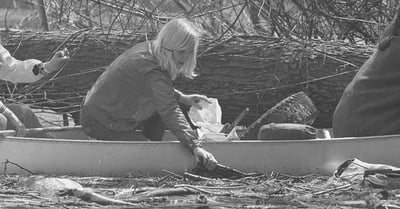
On the first Earth Day in 1970, this Girl Scout pulled trash out of the Potomac River.
Image: Library of Congress Prints and Photographs Division, LC-DIG-ds-00750
An Earth-Shaking Event
When Earth Day began on April 22, 1970, no one knew quite what to expect—yet what actually happened was still a surprise! The day drew 20 million Americans into the streets. It was the largest demonstration in US history, with 10 percent of the nation’s population taking part.
Thousands of schools and colleges, universities, and towns and cities participated. There were seemingly countless marches, cleanups, and demonstrations.
Diverse groups came together for the environment, and that provided momentum for an ongoing political movement. Earth Day also demonstrated that there was widespread public support for the government to improve the environment.
The Power of Activism Sparks Change
After the first Earth Day, Hayes converted his organization into a lobby that could work politically for the environment. It launched a campaign against a group of 12 politicians that it called the “dirty dozen.” These were the members of Congress with the most “pollution-friendly” stances and the worst environmental track records.
Seven of these politicians lost their next elections. So in the 1972 and 1974 elections, environmentalists targeted new “Dirty Dozens.” They were able to send another 13 members of Congress packing.
The nation’s leaders took notice. Some politicians started to learn about environmental issues. Others sensed a change in the national mood and went with the new flow. Within a few years, Congress passed the Clean Air Act, the Clean Water Act, the Endangered Species Act, and the Marine Mammal Protection Act.
Meanwhile, President Richard Nixon created the Environmental Protection Agency. Suddenly, the federal government was actively engaged in being a steward of the environment.
Earth Day’s Legacy
As the nation’s air cleared and endangered animals like the bald eagle began to come back, the American people also changed their ways. They opted for buying “greener” cars and light bulbs. They began asking for clean, renewable energy like solar and wind power, and they started recycling instead of throwing everything into the trash.
Earth Day kept growing, and its scope eclipsed national boundaries. In 1990, Denis Hayes organized Earth Day to go global, and it included 200 million people in 141 countries. In 2000, more than 180 nations took part in Earth Day demonstrations against climate change.
Unfortunately, US leaders did not remain in agreement about the value of protecting the environment. During the 1980s, many environmental regulations were rolled back. Conservation became increasingly political, with some people seemingly always against it in any form.
Yet the nation’s new environmental movement has remained a strong political force over the years. And the start of this movement for the planet can be traced back to what was supposed to be a 10-minute conversation.
This month we're giving away free copies of The Conservation Issue: a supplemental resource for students. All you have to do is answer one simple question: Do you think it is the responsibility of schools to teach students about protecting the environment? Send us your answers here.
